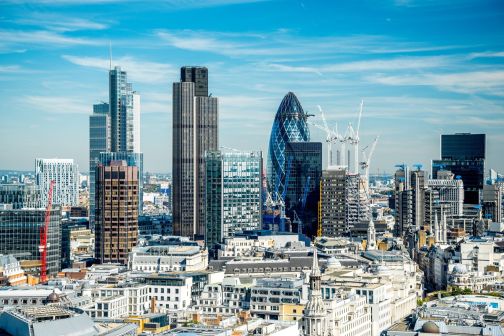
The Energy Performance of Buildings Directive and the NZEB 2020 target for new buildings
The Energy Performance of Buildings Directive (EPBD) has been in place for all European member states, including the UK, since 2010, with the latest update coming into effect in July 2018.

The directive was created to ensure a positive trend in the improvement of building efficiency, helping consumers to save energy and money. This piece of European legislation has also been key to reducing greenhouse gas emissions in the built environment over recent years.
When the EPBD was introduced, member states were faced with a number of challenges - but one of the most apparent was the requirement for all new buildings to be Nearly Zero Energy Buildings by 31st December 2020.
Does the NZEB 2020 target still apply to the UK should it withdraw from the EU?
When the EU present legally enforceable directives, all member states transpose the legislation directly into their own law.
The result is that the EPBD is now a part of UK legislation, including the legal requirement for all new buildings to be Nearly Zero Energy Buildings (NZEBs) by 31st December 2020. This law will still be present, if and when the UK leaves the European Union.
What is a Nearly Zero Energy Building?
Article 2 of the EPBD defines Nearly Zero Energy Buildings (NZEBs) as ‘a building that has a very high energy performance, where the very low amount of energy that is required is covered to a very significant extent by energy from renewable sources, including energy from renewable sources produced on-site or nearby’.
This definition is notoriously vague, with the EU being clear in wanting each member to decide how they are going to achieve the NZEB target in a way which is suitable for their market.
Despite not providing an exact numerical or technical target, the EU does make it clear that NZEBs require the building to be designed to use very low amounts of energy from predominantly renewable sources. This localised renewable requirement leaves a limited number of options from the spectrum of specifiable solutions currently in the marketplace in the EU.

How is the energy performance on a NZEB measured?
The EPBD requires all member states to draw up national plans for achieving the NZEB 2020 target, allowing them to decide their own energy targets for different categories of building to ensure that that each development type uses a ‘very low amount of energy’.
An area in which the EPBD is clear is that NZEBs should be measured in primary energy – a different metric to the UK’s current approach of carbon emissions reduction.
Primary energy (expressed as kWh/m2 per year) is a reflection of how much raw fuel is used to generate a unit of final energy. This includes the energy used to create, transform and transport the energy from its raw form to where it is used.
‘The energy performance of a building shall be expressed by a numeric indicator of primary energy use in kWh/(m2.y) for the purpose of both energy performance certification and compliance with minimum energy performance requirements’
Energy Performance of Buildings Directive 2018, Annex 1a.1
What is included in the energy performance measurement?
Each member state uses their own NZEB definition to decide what energy uses will be included in the target, however the EPBD requires all countries to reflect typical energy use for space heating, space cooling, domestic hot water, ventilation, built-in lighting and other technical building systems. The member state definition will then list any additional uses, such as auxiliary energy, central services and electric vehicle charging.
This means that under a primary energy focused system, specifiers will achieve compliance by meeting a minimum energy target for the defined list of energy uses, whilst ensuring that a large proportion of this energy demand is met via renewable sources.
Simply reviewing the energy uses that will be measured under the EPBD will result in a significant change for UK specifiers, who have previously been focused on the carbon intensity of their solutions, and not the energy consumption or its origin.
Reviewing HVAC solutions under these parameters could lead to a step-change in the solutions that are specified into new buildings, with a lack of certainty on whether this will be forwards or backwards with regard to the UKs progress towards its wider environmental targets.
One possible solution for this is to align primary energy compliance with other supporting compliance indicators or a renewable energy strategy.
Energy performance for a NZEB is measured in a different way to the UK’s current carbon emissions approach.
With the 2020 target deadline, Government will likely use the imminent update to Approved Documents L and F to transition to a primary energy inclusive system.
What does this mean for building compliance in the UK?
The UK Government has yet to set their definition for a nearly zero energy building, which includes the list of energy uses that will contribute to compliance with the new energy target.
As the NZEB definition is clear on the importance of renewable source in mainly providing for the energy demand, building designers are likely to see an increase in the use of heat pump technologies and other renewable technologies, alongside a potential direct electric solution which benefits from the rapidly decarbonising electrical grid.
It will be difficult to predict what a NZEB design in the UK will look like until Government have set the definition and scope for primary energy targets, including contributing energy users, final primary energy factors and supporting compliance indicators.
However, with the deadline for member states to comply with the NZEB target at the end of 2020, the UK will likely need to use the Part L and Part F update to make the necessary changes to the UK compliance system for new developments. This consultation for this update is expected towards the end of 2019
To understand more about the impact of primary energy on the UK’s building compliance system, request a copy of our reports:
Staying on target – Combining nearly zero energy buildings and low carbon HVAC solutions
Nearly Zero Energy Buildings - Primary Energy Compliance and our Low Carbon Future








